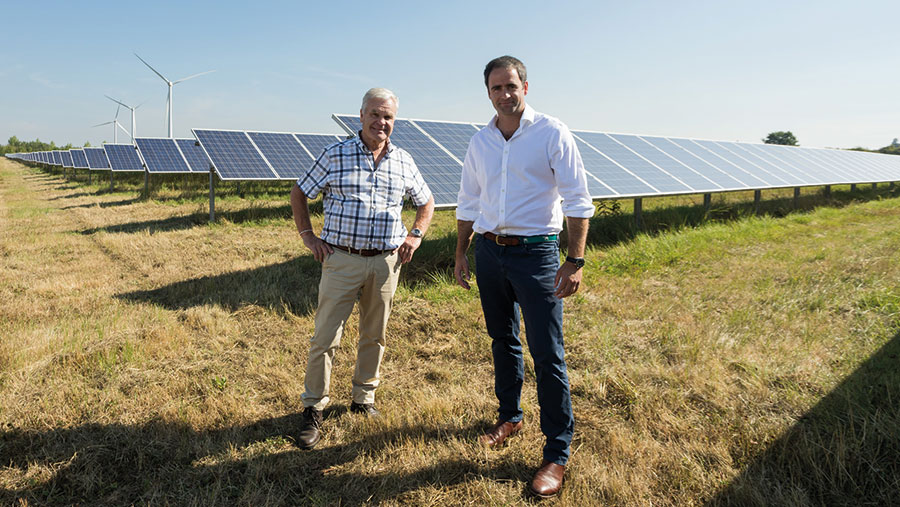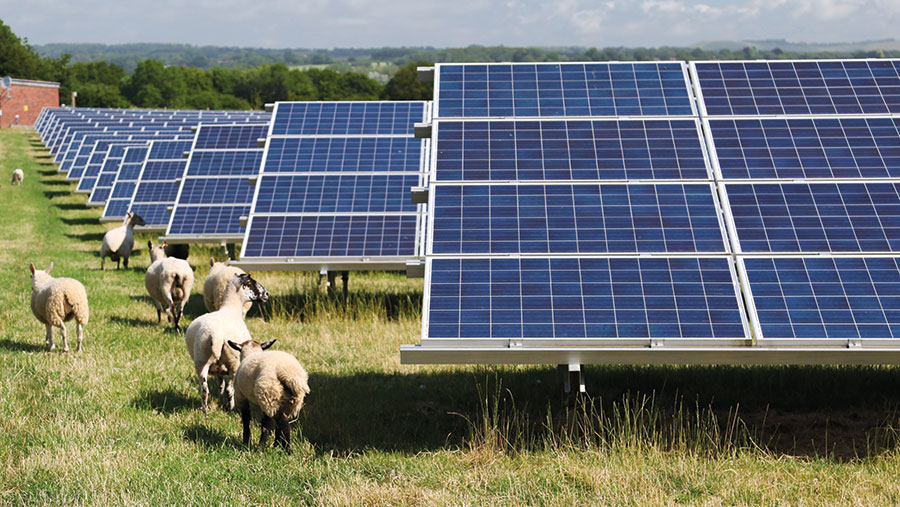Advertiser content
Lightsource bp acquires 250 acres of land under operational solar farms
Roger is the third generation of Pyketts to farm at the Grange Farm in Hawton, near Newark. In 2011, Roger was approached by Lightsource bp to develop a 5MW solar farm on 40 acres of peripheral farmland; the project was subsequently built and accredited under the Feed in Tariff.
In 2016, Roger sold the land to Lightsource bp after benefitting from five years of rental income. In 2018, discussions began to build a larger, 50MW (200 acre) solar farm on the farm, which was completed in 2020 and the land sold to Lightsource bp 6 months later, as a part of Roger’s retirement and succession planning
Can you tell us about your experience of letting land for solar development?
A: Lightsource Renewable Energy (as they were then) were a pleasure to deal with. They were extremely professional throughout each stage of the development process, from securing the planning consent to the first date of electricity generation on site.
I was particularly impressed with their level of local stakeholder engagement; they were considerate of the initial feedback from the local community and did their utmost to assuage any concerns that were raised.
The lack of disruption throughout the construction period surprised me too; apart from the odd broken land drain, which was quickly repaired, the process was completely painless.
Both areas of the farm on which the 260 acres or so of solar now sit (combined across the two sites) are built on reclaimed gypsum land. This land has always been hard to work and so deciding to lease it for development was a no-brainer.
Selling land is never an easy decision; what factors led you to sell two separate blocks to Lightsource bp?
A: We managed to acquire the land after a long period as successive tenants. Whilst the price we paid for it looks cheap now, it didn’t feel it at the time.
We had to borrow heavily to buy the property; many of your readers will be familiar with the stress of taking on debt to expand their business and it’s been a constant feature of my life as a farmer.
We worked hard and paid as much of the debt off as we could but were also lucky that land prices continued to rise over the period. I look at land values now and they seem so disconnected from your average farm’s profit margins that they just don’t make sense.
Having the solar lease in place however made a big difference to the freehold value; following a professional valuation process we were paid more than two times the agricultural value on sale, which helped me to retire comfortably and put a succession plan in place for my two sons.
Succession is obviously a key consideration for most farming families; how did the solar development and subsequent sale help with your Estate planning?
A: My eldest came back to work on the farm, with my youngest heading off to work for a contractor and subsequently at a large machinery agency.
The ‘trilemma’ of being fair to both sons, trying to keep the farm together and planning for my retirement was a complex one. The solar option made the job a lot easier though, for a few reasons.
We were able to get a significant premium for the land itself, meaning I could purchase a property away from the farm for my wife and I to retire to, as well as gift some capital to my youngest from the proceeds.
There was therefore no necessity to sell any of the core assets, meaning the elder son could continue farming commercially as well as exploring diversification opportunities.
The tax position on selling was much more beneficial than sitting on rental income; the assets were held by the partners individually, which meant we paid higher rate taxes on income; by selling, I was able to qualify for Entrepreneurs Relief in retirement (10% tax rate) and the other Partner, my youngest son, paid 28% Capital Gains or could rollover the tax into qualifying purchases.
If readers are considering a similar option (i.e., selling land subject to a solar lease) what would your advice be?
A: Speak to Lightsource bp to understand what they might be able to pay you. It will vary depending on how long left of the lease you have and what your rent is, but I’ve found them to be very transparent and honest counterparties.
Then take advice. Having solar on your land is a great diversification benefit, but it complicates your tax position. For us, it became an inheritance tax liability as we lost our agricultural relief.
Lastly, how do you see UK agriculture changing over the next 10 years?
A: The challenges facing agriculture are massive, but there will be opportunities for those willing to take a risk; look out side the box and consider alternative uses for marginal land.
Contact us to find out more:
James Thomas
Lightsource bp
james.thomas@lightsourcebp.com
07894806131
Simon Smith
Alder King
ssmith@alderking.com
07990891004
Provided by
A global leader in the development, financing and construction of utility-scale solar.


